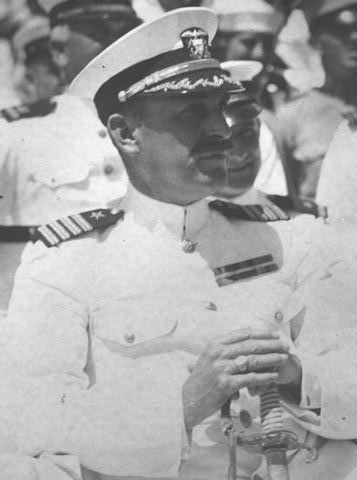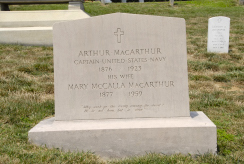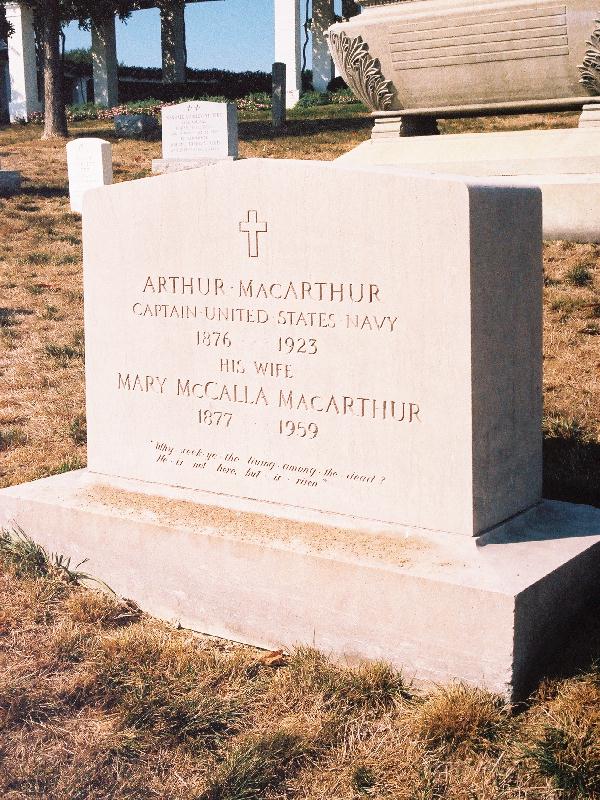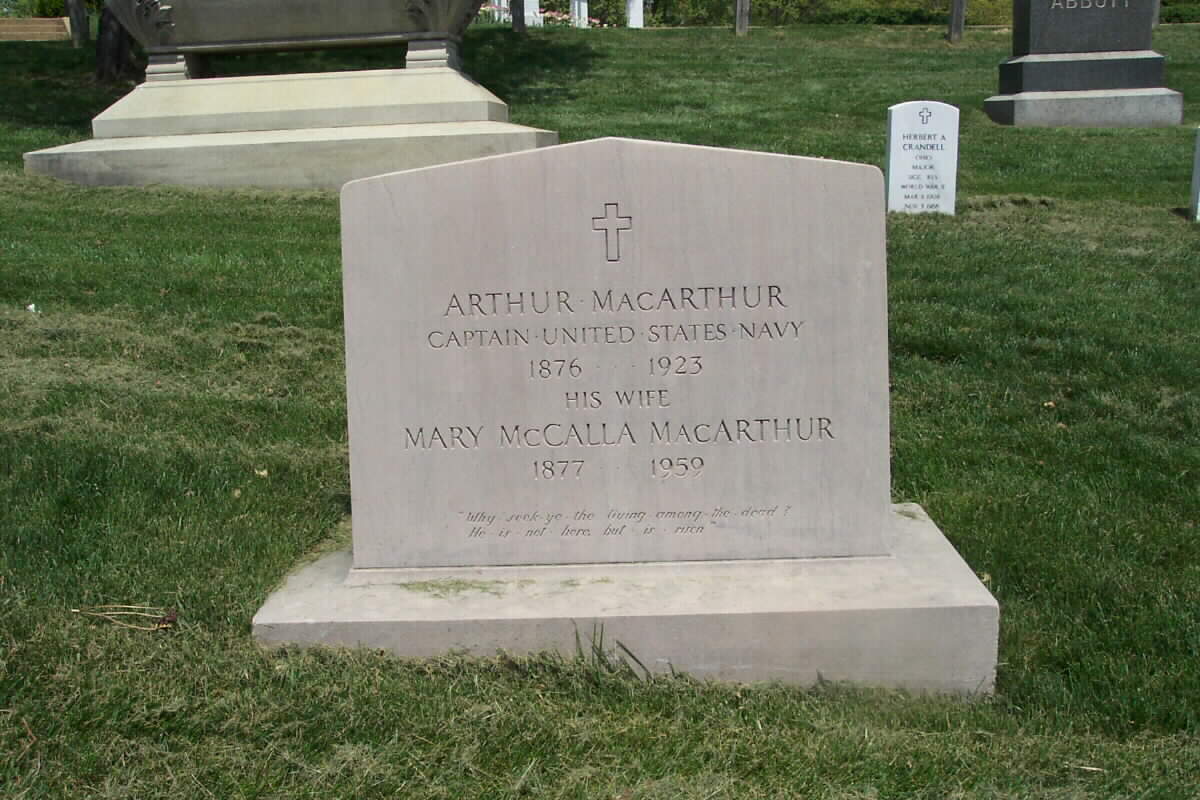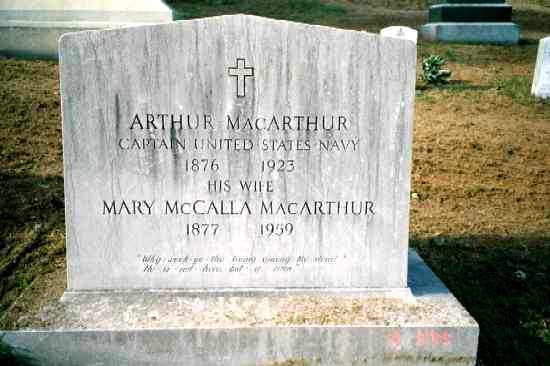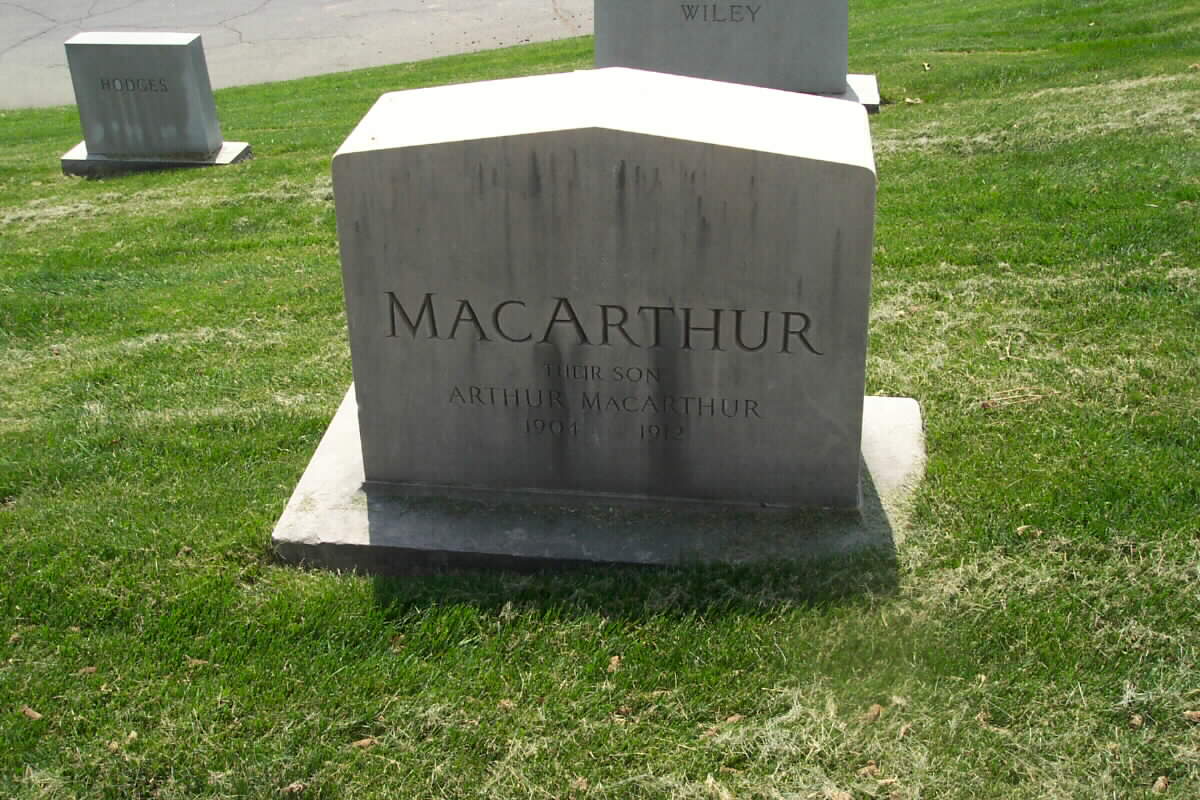He had lived the life of an "Army Brat", and had tired of the interminably marching Army. Others attending the Academy during his years there, included future novelist Winston Churchill and such future admirals as William D. Leahy, Thomas C. Hart, and William H. Standley. He graduated with high-honors in 1896 and was commissioned an Ensign. He was soon serving the first of many tours of sea duty. He was aboard the gunboat USS Vixen in the Battle of Santiago, off Cuba during the Spanish-American War in July 1898. He later participated in naval operations during the Philippine Insurrection and the Boxer Rebellion. His career was certainly not handicapped at all by his marriage to the daughter of Rear Admiral Bowman McCalla in 1901.
In 1902, he took command of the USS Grampus, a newly commissioned submarine and the first to be built on the Pacific Coast. He was soon given command of a division of submarines and according to his brother, "was one of the original developers of underwater tactics and strategy." In 1906, as a Lieutenant, he returned to the Naval Academy as an aide to the Superintendent.
In 1909, when his father retired from the Army, he was a Lieutenant Commander, serving aboard the battleship USS Louisiana. Two years later, he was given command of the USS McCall, a new destroyer. In 1912, he was transferred to the General Board of the Navy in Washington, the equalivent to the Army General Staff. He was Superintendent of the State, War and Navy Building, where his office was located next to the White House.
Promoted to Commander in 1915, well ahead of his classmates, he returned to sea as Captain of the USS San Francisco, a mine sweeper. When World War I came in 1917, he was commanding the armored cruiser USS South Dakota in the Pacific Fleet. He was transferred to the Atlantic Fleet and given command of the light cruiser USS Chattanooga, which was on convoy duty. For distinguished work in protecting the troop transports from German U-Boats in 1918, he was awarded the Navy Cross, the Distinguished Service Medal and was promoted to Captain.
After the war, he commanded the San Diego Naval Training Center for two years and then headed back to sea on the USS Henderson, which was on duty with the Navy Transportation Service. In the Spring of 1923, he returned to Washington, D.C. to serve on the Boards of Examination for Promotion and Retirement of Naval Officers.
He was working in the Navy Department when he was suddenly striken with an attack of appendicitis and died on December 2, 1923. During his 31 years of naval service, 19 spent at sea, he won wide recognition, according to a contemporary, as an able, energetic and popular officer. To the MacArthurs, his career was convincing proof once again that a MacArthur possessed superior intellectual and leadership qualities and could master any field of his choosing. In his memoirs, Douglas MacArthur, wrote, "I loved my brother dearly and his premature death left a gap in my life which has yet to be filled."
He is buried in Section 2 of Arlington National Cemetery, near his father and other family members, under a stone which reads:
"Why seek ye the living among the dead."
He had lived the life of an "Army Brat", and had tired of the interminably marching Army. Others attending the Academy during his years there, included future novelist Winston Churchill and such future admirals as William D. Leahy, Thomas C. Hart, and William H. Standley. He graduated with high-honors in 1896 and was commissioned an Ensign. He was soon serving the first of many tours of sea duty. He was aboard the gunboat USS Vixen in the Battle of Santiago, off Cuba during the Spanish-American War in July 1898. He later participated in naval operations during the Philippine Insurrection and the Boxer Rebellion. His career was certainly not handicapped at all by his marriage to the daughter of Rear Admiral Bowman McCalla in 1901.
In 1902, he took command of the USS Grampus, a newly commissioned submarine and the first to be built on the Pacific Coast. He was soon given command of a division of submarines and according to his brother, "was one of the original developers of underwater tactics and strategy." In 1906, as a Lieutenant, he returned to the Naval Academy as an aide to the Superintendent.
In 1909, when his father retired from the Army, he was a Lieutenant Commander, serving aboard the battleship USS Louisiana. Two years later, he was given command of the USS McCall, a new destroyer. In 1912, he was transferred to the General Board of the Navy in Washington, the equalivent to the Army General Staff. He was Superintendent of the State, War and Navy Building, where his office was located next to the White House.
Promoted to Commander in 1915, well ahead of his classmates, he returned to sea as Captain of the USS San Francisco, a mine sweeper. When World War I came in 1917, he was commanding the armored cruiser USS South Dakota in the Pacific Fleet. He was transferred to the Atlantic Fleet and given command of the light cruiser USS Chattanooga, which was on convoy duty. For distinguished work in protecting the troop transports from German U-Boats in 1918, he was awarded the Navy Cross, the Distinguished Service Medal and was promoted to Captain.
After the war, he commanded the San Diego Naval Training Center for two years and then headed back to sea on the USS Henderson, which was on duty with the Navy Transportation Service. In the Spring of 1923, he returned to Washington, D.C. to serve on the Boards of Examination for Promotion and Retirement of Naval Officers.
He was working in the Navy Department when he was suddenly striken with an attack of appendicitis and died on December 2, 1923. During his 31 years of naval service, 19 spent at sea, he won wide recognition, according to a contemporary, as an able, energetic and popular officer. To the MacArthurs, his career was convincing proof once again that a MacArthur possessed superior intellectual and leadership qualities and could master any field of his choosing. In his memoirs, Douglas MacArthur, wrote, "I loved my brother dearly and his premature death left a gap in my life which has yet to be filled."
He is buried in Section 2 of Arlington National Cemetery, near his father and other family members, under a stone which reads:
"Why seek ye the living among the dead."
Inscription
CAPTAIN UNITED STATES NAVY
Why seek ye living among the dead? He is not here, but is risen.
Gravesite Details
Buried with his wife and 8 year old son
Family Members
Sponsored by Ancestry
Advertisement
Records on Ancestry
Sponsored by Ancestry
Advertisement











